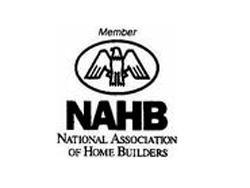Remodeling Declines in Second Quarter
Washington, DC, July 29, 2010 - The remodeling market declined during the second quarter, according to the latest National Association of Home Builders' (NAHB) Remodeling Market Index (RMI).
The RMI (combining current and future market indicators) sunk to 40.7 from 47.9 in the first quarter. Current market conditions slid back to 42.6 from 44.5 in the previous quarter. Future indicators of remodeling business declined to 38.9 from 43.1 in the last quarter.
The RMI measures market demand for current and future residential remodeling projects based on remodelers' perceptions and indicators of future activity like calls for bids. Any number below 50 indicates that more remodelers say market conditions are getting worse than report improving conditions. The RMI has been running below 50 since the final quarter of 2005 and during the last quarter approached break even again.
"Remodelers are suffering from weak consumer confidence and constricted credit lines," said NAHB Remodelers Chairman Donna Shirey, a remodeler from Issaquah, Washington. "Homeowners are delaying remodeling projects because of economic uncertainty."
Responding to additional special questions in the survey, remodelers also reported on the changing composition of remodeling projects. Sixty-one percent said bathroom remodeling was one of their most common projects during the first half of 2010. Kitchen remodeling came next with 52 percent. In previous years, kitchen remodeling was reported as the most common activity by more than 70 percent of remodeler respondents.
In general, comparisons to historical data show that larger remodeling projects (such as room additions, whole house remodeling, bathroom additions, and second story additions) have been on the decline for several years.
Smaller remodeling jobs (such as window and door replacements) have remained relatively steady, or, in the case of handyman services, actually increased.
For example, only 29% of remodelers reported that room additions were a common activity in 2010, compared to 70 percent in 2004. Conversely, none of the professional remodelers responding to the survey reported that it was common for their companies to perform handyman services in 2004, while 33% of remodelers were regularly providing handyman work in the first half of 2010.
"While remodelers are continuing to struggle, we expect the rest of 2010 to be a period of stabilization for remodeling, with the first stages of recovery emerging by the end of the year, followed by a more robust recovery beginning early next year," said NAHB Chief Economist David Crowe.
"For now, professional remodelers are taking on smaller projects and working to find consumers willing to spend money despite the economic uncertainty."
